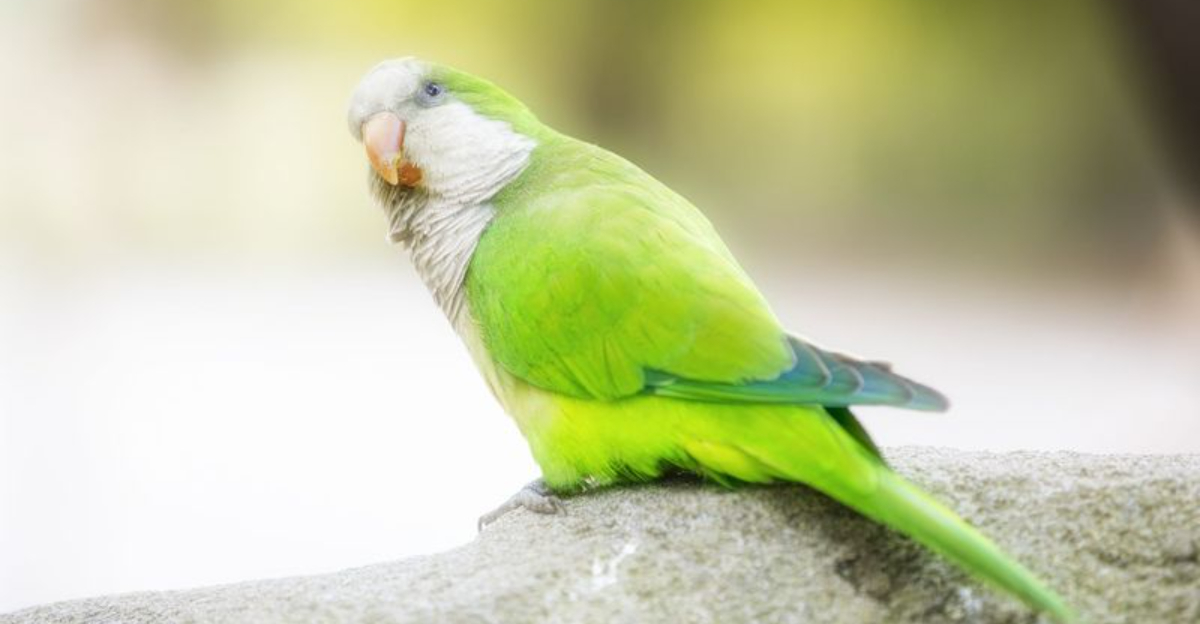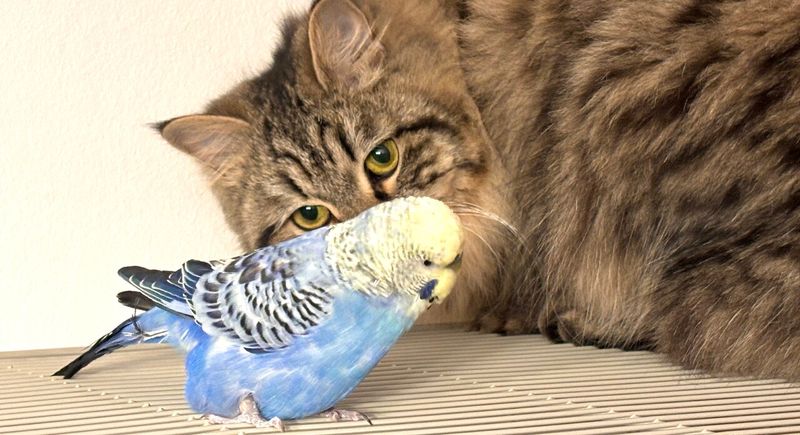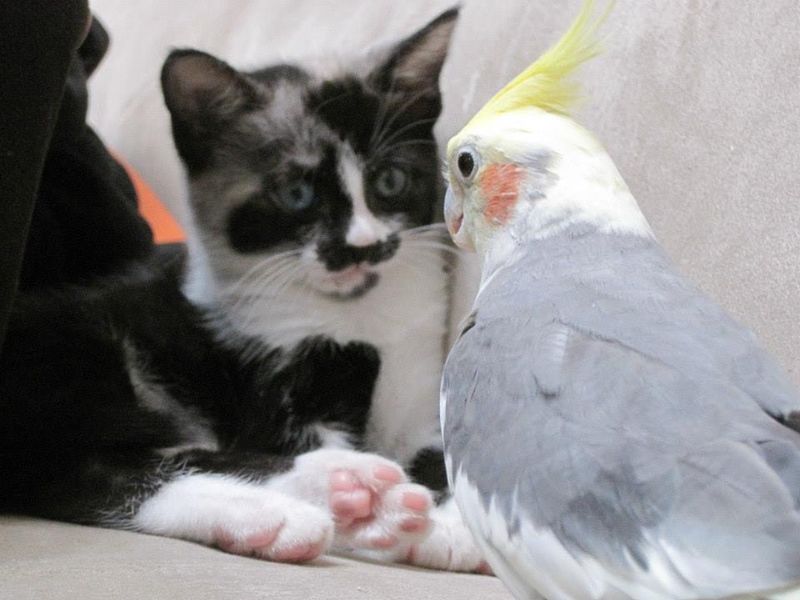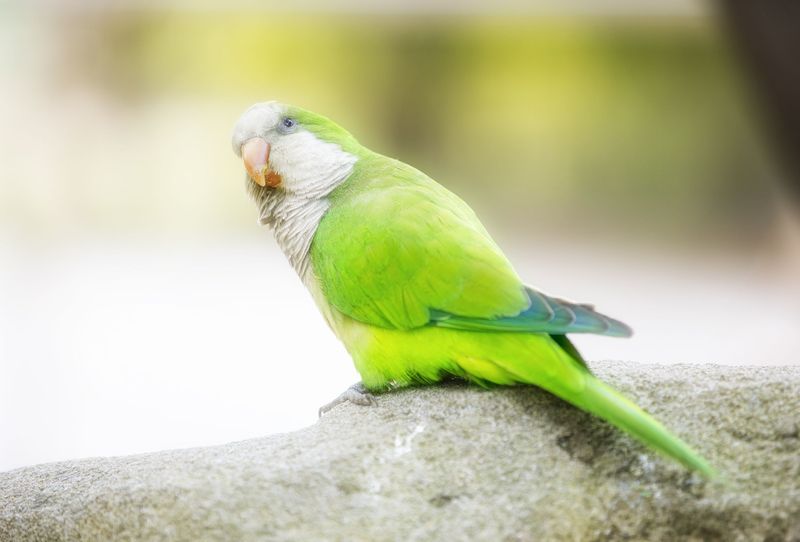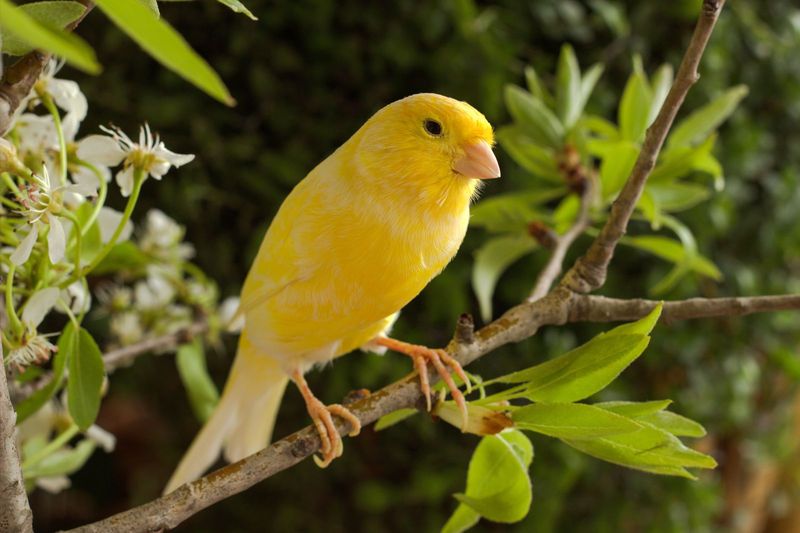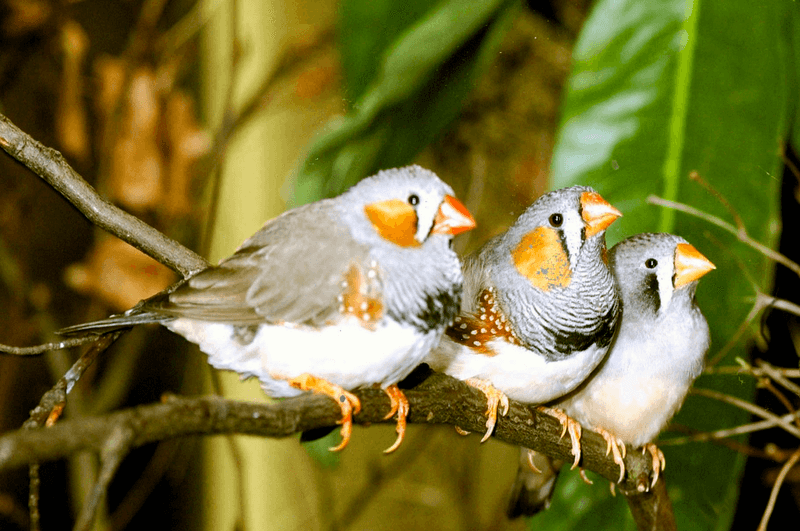📖 Table of Content:
Cats and birds aren’t exactly known for peaceful coexistence. One is a natural predator, the other, historically prey. But for pet lovers who adore both feline grace and avian charm, the dream of keeping them together can feel impossible—until you meet the right kind of bird.
Certain bird species possess temperaments, instincts, or lifestyles that make them more adaptable to sharing a home with a curious cat. This doesn’t mean throwing them into a playroom together, of course. Proper barriers, training, and consistent supervision remain crucial. What it does mean is that with the right bird, thoughtful setup, and cautious introductions, it’s entirely feasible to create a home where meows and chirps coexist peacefully.
The key lies in choosing bird species that are less prone to panic, more physically agile, or content living safely within their cages. Below are seven bird types that stand out for their potential to adapt to feline roommates—each with its own strengths and caveats. This guide can help you determine which feathery friend best suits your multi-species home.
1. Budgerigar (Budgie/Parakeet)
Zipping around the cage with unmatched energy, budgies are tiny bundles of personality. Their quick reflexes and chatty demeanor can make them feel more confident in a household with other pets. While they’re not fearless, their social curiosity means they often become familiar with other creatures in the home, including cats—albeit from a safe distance. A sturdy, escape-proof cage placed in a secure room can provide the safety they need while still allowing them to interact visually with your feline. Their need for daily stimulation makes them a good fit for owners already attuned to active pet care. However, their small size makes them vulnerable to any direct contact. Keeping interactions visual and highly controlled is vital for their safety.
2. Cockatiel
Standing out for their endearing whistles and crest expressions, cockatiels offer a calm but engaging presence. Unlike more frantic bird breeds, they move in a measured way that can make them less likely to provoke a cat’s hunting instincts. Their friendly disposition and ability to bond deeply with human caregivers also help when setting clear household boundaries. Cockatiels thrive on routine, so if your cat learns not to bother their cage, peaceful coexistence is possible. Their vocalizations are less piercing than other parrots, which helps keep a cat’s attention from becoming obsessive. A covered cage during quiet hours or nap time can also support boundaries. Still, every physical encounter must be monitored to avoid injury or stress.
3. Green-Cheeked Conure
Jumping into the spotlight with a bold and cheeky nature, green-cheeked conures have the attitude of a bird twice their size. Their cleverness allows them to assess danger quickly, often avoiding risky areas or sudden movements. These birds love interaction, which can be a benefit in households where pet dynamics are more interactive than isolated. Though they’re playful, they tend to stay close to their favorite humans, making cat avoidance easier to manage. Their chirps and squawks aren’t overly loud, which means cats may not see them as particularly stimulating. The key is to give them a high, enclosed perch where the cat can’t reach but can observe. While they may tolerate a cat’s curiosity, protection remains the priority.
4. Quaker Parrot (Monk Parakeet)
Confident by nature, Quaker parrots often seem unaware of their smaller stature. Their strong personalities and frequent vocalizations can help establish a noticeable presence in a home with a cat. These parrots like to build nests and create spaces of their own, which can be structured away from feline pathways. Because of their territorial instincts, they are usually quite vocal when something—or someone—gets too close, serving as an early warning system. Quakers thrive in predictable environments, which helps maintain order when integrating multiple pets. Their ability to mimic sounds can even confuse a cat or distract it from direct attention. Still, it’s essential to maintain strong physical boundaries to avoid any territorial conflict or accidental swatting.
5. Canary
Floating softly through the air with their melodic songs, canaries are best appreciated from afar. These birds are ideal for cat households because they typically don’t require out-of-cage interaction or direct human contact. Their cages can be positioned high on shelves or mounted on walls, keeping them well out of a cat’s reach. Because they don’t crave handling, their lives remain safely behind bars, which is ideal for homes with curious or playful cats. Canaries don’t produce sudden noises or erratic behavior that might spark a cat’s hunting instinct. While they’re relatively low-maintenance, their sensitivity to stress means environmental calm is essential. Letting them coexist visually, without physical access, provides the best scenario for both species.
6. Zebra Finch
Darting quickly and often in pairs, zebra finches are highly active birds that enjoy the company of their own kind more than direct human or animal interaction. These birds are best suited for observation and are often happiest in a flock within a well-secured aviary. Their size makes them especially delicate, but their speed and nesting behaviors keep them somewhat under the radar in a bustling home. A tall cage with horizontal space gives them freedom without requiring out-of-cage time. Because they’re not social with larger animals, they’re less likely to provoke a cat’s curiosity directly. Their chirps are soft, which avoids setting off hunting triggers. Full separation remains a must, but their self-sufficiency works in your favor.
7. Pionus Parrot
Grounded in a calm and observant personality, the Pionus parrot tends to keep a low profile. These medium-sized parrots aren’t flashy or frantic, which makes them less likely to attract unwanted feline attention. Their steady energy and soft vocalizations make them a relaxed presence in any home. Since they’re less emotionally needy than some parrots, they adapt well to a quiet space with limited interaction. Pionus parrots benefit from having a consistent routine and safe retreat spots. With slow movements and little fuss, they remain less threatening to a cat’s instincts. As always, physical separation and supervision are essential, but their temperament offers an advantage.
